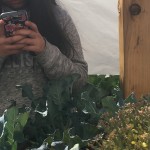Today, after a short PD session introducing an upcoming focus for our faculty, I was once again bothered. Rather, I was nagged by a small portion of that self-doubt that engulfs me every January before AZELLA testing happens.
Our principal had asked us an incredibly rich question: How do we create learning environments where students understand what they are learning and why? The discussion began with the non-example of teachers writing task-oriented lists on our board each day for students, versus agendas expressing the desired learning for the day. I immediately had post-traumatic flashbacks to 2014, when I wailed against “objectives.”, arguing that obsessing over writing objectives actually detracted from my ability to teach effectively. “Here we go again!” I thought.
But rather than introduce formulaic “learning targets” or anything of the sort, the principal simply led us in a discussion of how we create learning environments focused on learning vs. tasks. So I calmed my heart rate and reflected: Can my students articulate what they are learning and why?
The short answer to that question is no. They don’t speak English. Actually, most of my students speak some English, but can articulate very few academic concepts at all. The vast majority struggle to take focused notes, or respond to the most literal of writing prompts in any clear, developed way. They also share a lot of qualities and histories of any “typical” at-risk student. Many struggle to stay motivated with school, after 6-8 years of ELD classes and only minimal success according to academic measures such as benchmarks and standardized testing. Their engagement in school and in my lessons depends on their attraction to the subject matter, the design of the activities and whether or not we have a good relationship. In effect, I have become guilty of being at least somewhat task-oriented.
As much as I understand what literacy skills I hope my students develop, on some level I have backed off from expressing them in terms of “what we are learning in class today.” Five years ago when I began teaching ELD, I reflected on the “learning targets” I had been required to write on my board at my previous job. They were so wordy! Thinking of what my room would look like to a newcomer English learner, I realized that, covered in English teacher posters about metaphors, tone, punctuation… the whole room would be coated in a layer of text. I decided this could be intimidating for a newcomer, even upsetting. Definitely exhausting if nothing else.
I put up maps, some Escher prints I cut from an old calendar, and only the most visual of my own posters. I decided I would only post informative, text-based posters after we had studied the material together as a class. I would have a grammar wall, a lot of student work as time went on, and not much else. In addition, I decided not to put up learning targets. I re-organized the board, and went back to the old ways of listing what we would do that day, in as few words as possible.
Today I am struggling with whether this is okay, and whether my students could explain to anyone why our work together is important. For my newcomers, I know that they realize their essential need to learn how to read, write, speak and understand English. For the basic and intermediate level students, though, it’s more complicated. Some are motivated students in touch with their “big why.” Others are just getting through the day.
It’s these last students that most make me question whether I need to go back to directly addressing what we are learning, every day, no matter what. On the one hand, students’ eyes glaze over when I do that. On the other, I could find more engaging ways to do it. On the one hand, if the content and activities are good enough, they will work hard anyway, and they will learn what they need to. On the other hand, isn’t it an equity issue if I am not offering my students the same opportunity to have a rich appreciation of some of the “big why’s” of refining their ability in English that I would offer any other student? By listing what we will work on that day (vs. what I hope they will learn) am I in fact lowering my expectations? I want to say no, but honestly, I am unsure. I know that the more reflective of my students could probably explain why we are, say, reading about migration patterns between Arizona and Mexico throughout history, and writing a report about the topic, but shouldn’t all the students be able to understand that?
And then I go down the rabbit hole, because everything takes longer in ELD. Everything. Time we could spend learning, say, present perfect tense would instead be spent learning the vocabulary to explain why it’s so important to learn present perfect tense. Is the meta-learning as important as the learning, when time is ticking and my students will soon need high school credits? And passing AZELLA allows them to get more credits? Asking these questions gives me stress.
Of course, I do address learning, not just tasks, with my students. At its heart, the question my principal asked was about authenticity in our teaching and assessment. The agendas on the board aren’t our whole learning environment. However, the question of whether I am making my class enough about learning and our “big why’s” will stay with me as I reflect on my plans for the remainder of the year. Certainly my students deserve it!
What innovative ways do you have for creating an environment in your classroom that’s all about the learning?









